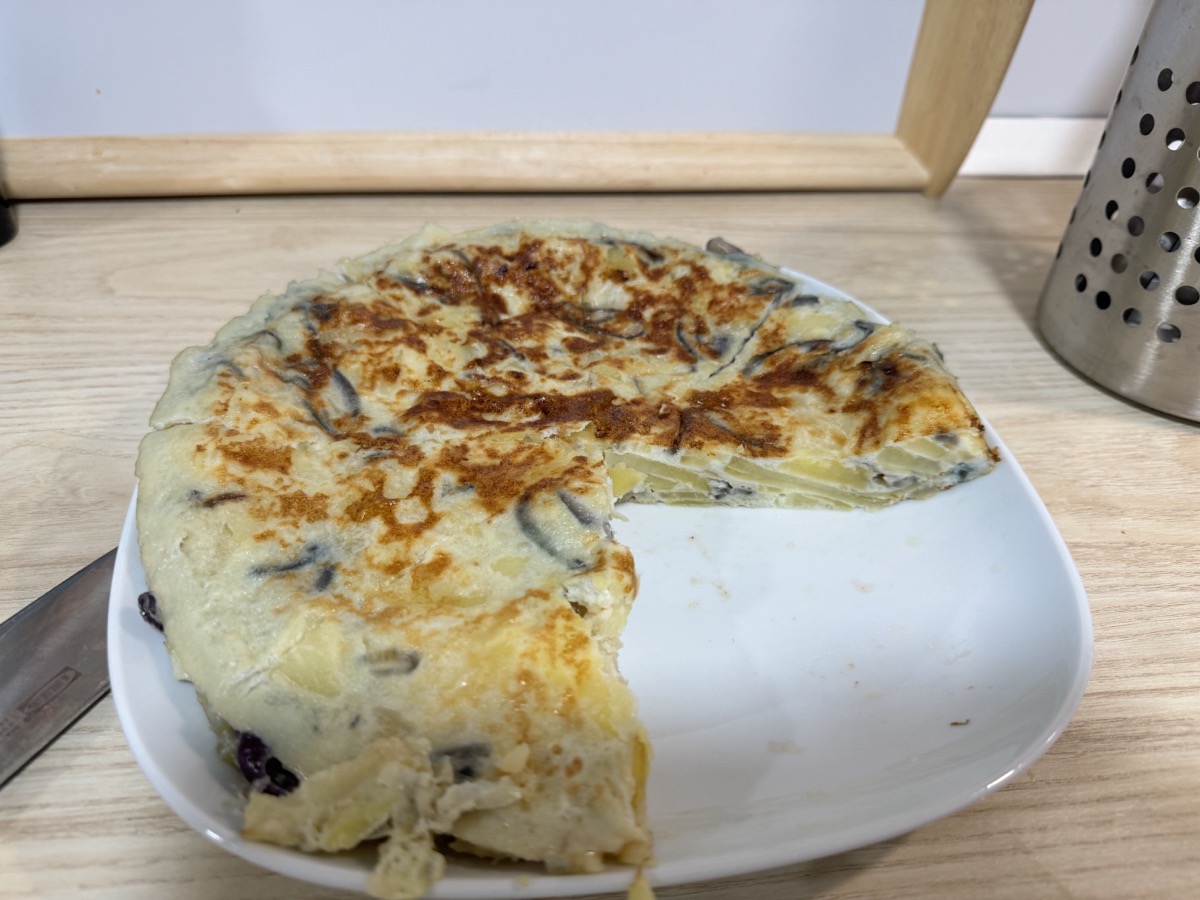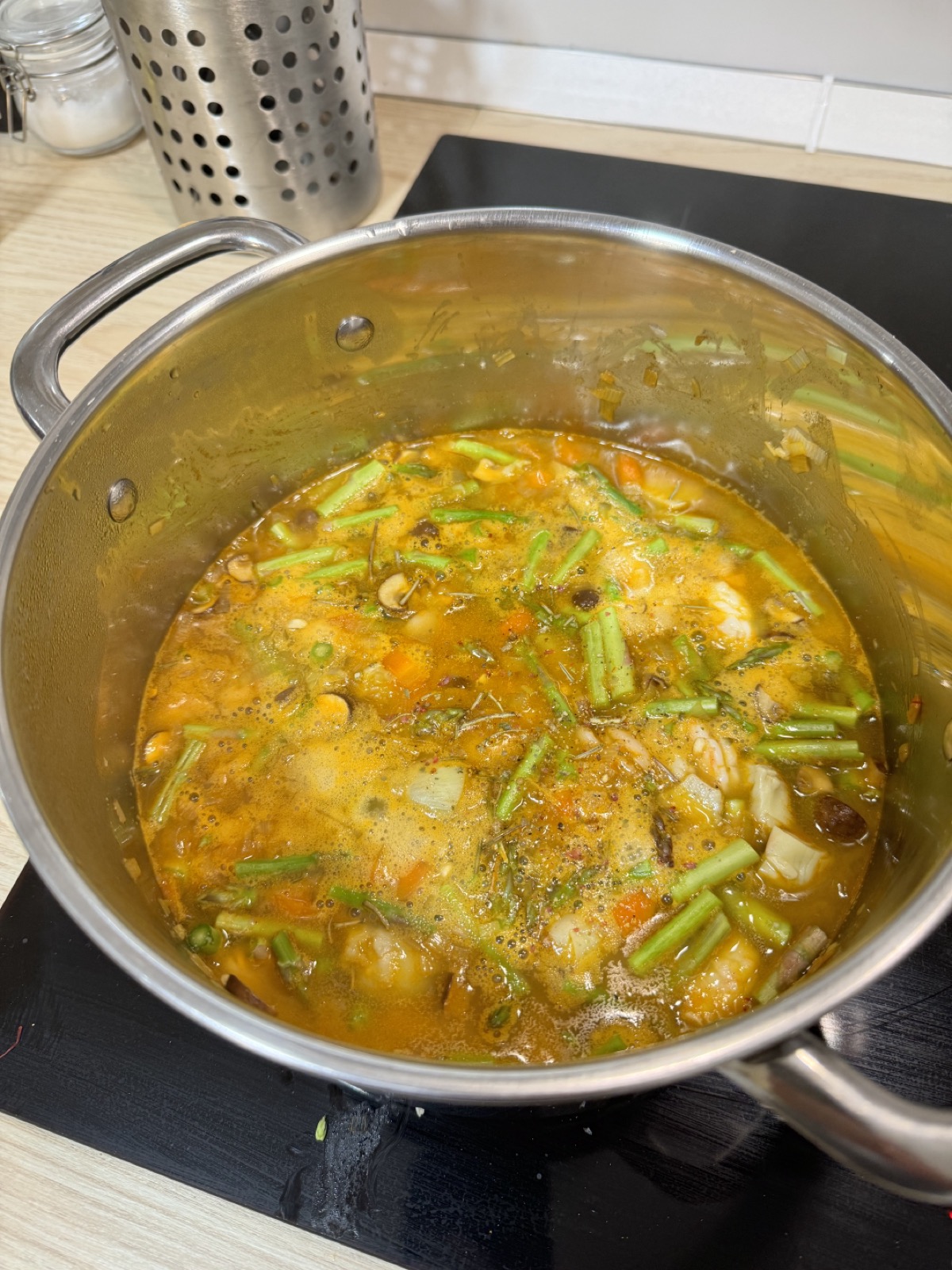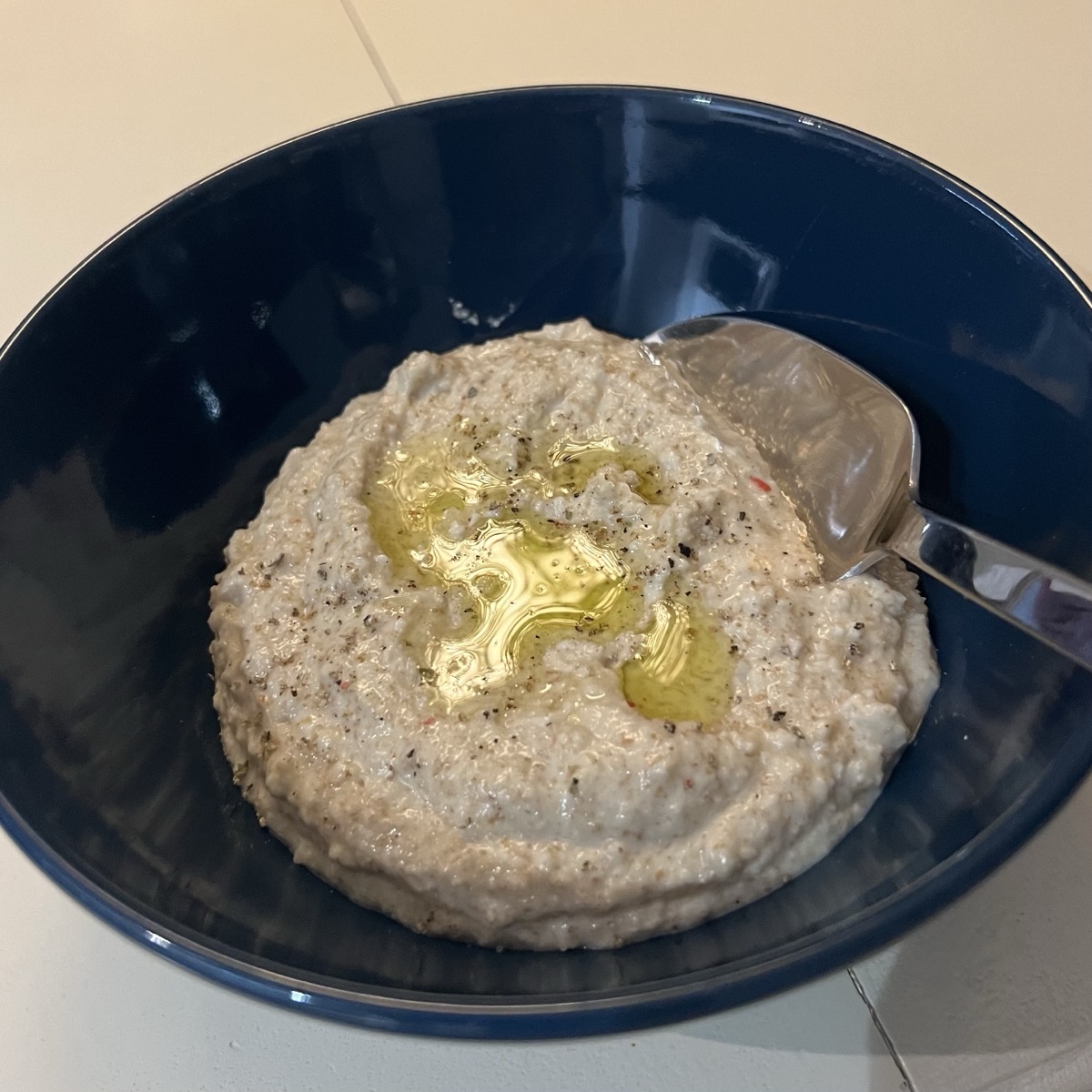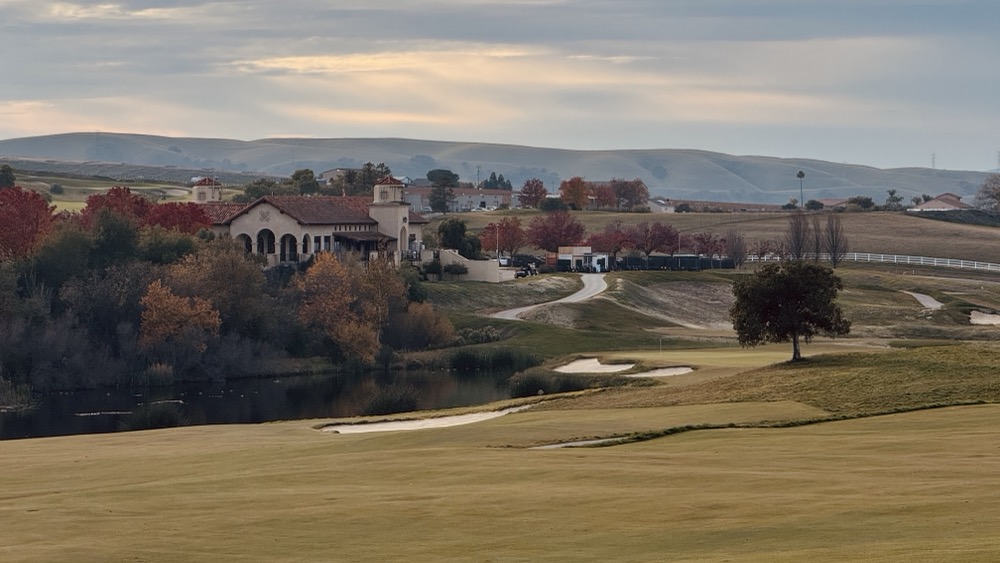Cooking in Spain
I’ve been doing some cooking and meal preparation here in Spain, attempting to learn some local dishes.
 Tortilla de patatas con cebollas
Tortilla de patatas con cebollas
I’ve had three runs at tortilla de patatas, aka Spanish omelette. This is a great dish to make ahead of time and keep around to eat a slice at time. For Spaniards this is more of a brunch or lunch meal option than breakfast. You’ll often find it served on toast, in a sandwich, and here in Málaga with various pig parts cooked into it.
The traditional tortilla is just eggs and potatoes, though we both prefer it with onions so that’s what I’ve made (twice with red onions, once with a white onion). I used this recipe as a starting point, and learned that it can be a pretty involved process. The potatoes are cooked in a lot of oil but only to tenderness and not crispy in any way. Then the oil is drained – I saved the oil and used it for future cooking. Next up the onions are sautéed and caramelized, I estimated that six eggs would be the right amount to fit into the (inferior) skillet I was working with. The potatoes are added to the beaten eggs, followed by the onions. I let this sit for 10 minutes per the instructions, though I’d like to validate this necessity with a test. Finally, the batter with everything goes into a sauté pan for some slow cooking.
I was hindered by equipment: in our Madrid apartment I didn’t even have a thin spatula or pastry scraper. So I used a small plastic cutting board to release the edges and slide under to check doneness. After getting the tortilla to firm state of done (but not getting too crispy or brown). I put a plate (or a larger cutting board) over the pan to flip it, then slide back into the pan to cook the other side.
The Spanish like it to be medium-rare to medium done (is that a thing? Slightly runny to moist…). Julie likes her eggs cooked so I let everything go longer. This is fairly easy to tell as it should start sliding around in the pan on its own. Remove, let it rest a bit, and serve in slices. I learned in my second (over-cooked) iteration that low heat is the key here (isn’t that generally true with eggs?). Be patient.
 My weak attempt at paella
My weak attempt at paella
In Madrid I made a paella with shrimp. Again, I didn’t have great equipment for this and I think the result was very average. It needs a larger diameter / bigger surface area pan (I think a wok would work out well), and I was stuck with a large pot. It was more like a veggie risotto by the end. I might take another run at this over an open fire with a dutch oven back at Keuka Lake this summer.
 Yummy mazamorra
Yummy mazamorra
¡Me encantan las sopas frías de España! Julie’s not so wild about the cold soups this time of year, preferring them in the hot summer months. Gazpacho is super easy to make, so I tried to make the Andalusian (and Córdoban) specialty Mazamorra. It almost couldn’t be easier: grind up raw almonds to a powder (but not butter), add reconstituted soaked old bread cubes, garlic, and vinegar and blend more, then add some olive oil. This isn’t cooking, it is an exercise is blending. Most of our AirBnBs have had immersion blenders which work fine, though a proper food processor would be better.
The nut base for this makes for a thicker cold soup, almost like a porridge. I topped it with olive oil, salt and pepper. Great with some fresh bread, and we had it alongside a green salad. I finished the last bowl for breakfast on our last day in Granada.








